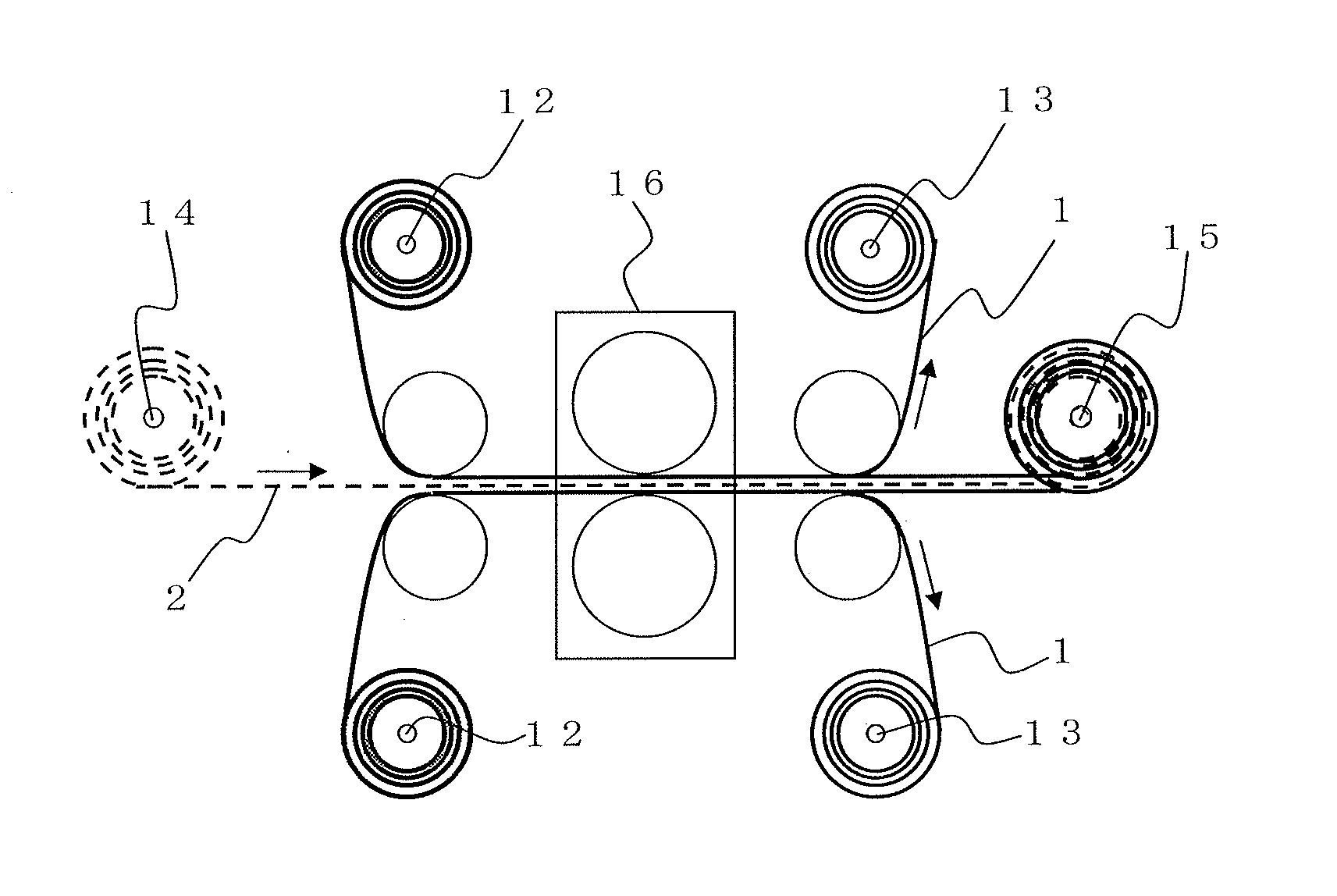Manufacturing method of an electrode for electrochemical element and an electrochemical element
a manufacturing method and electrochemical element technology, applied in the direction of cell components, final product manufacturing, sustainable manufacturing/processing, etc., can solve the problems of low productivity of lithium-ion secondary batteries, limited usable binding agents, and uniform doping of lithium at negative electrodes, so as to reduce the binding force and facilitate the manufacturing process. , the effect of excellent adhesion
- Summary
- Abstract
- Description
- Claims
- Application Information
AI Technical Summary
Benefits of technology
Problems solved by technology
Method used
Image
Examples
example 1
Manufacturing Alkaline Metal Powder Having a Coated Surface
[0240]55.72 g of lithium dispersion in oil (lithium content ratio=11.275%) including 6.28 g of lithium was poured in a hastelloy can. The lithium dispersion in oil was heated to 75° C., 1.9 g of 10% p-xylene (Aldrich) liquid solution of styrene.butadiene copolymer liquid solution (styrene:butadiene=85:15 (mass ratio)) was added as coat polymer, stirred for 22 hours at 200 rpm, and then a lithium dispersed material was obtained. Then, the lithium dispersed material was cooled to a room temperature. In addition, lithium dispersed material was filtrated in order to remove hydrocarbon oil solvent; and then the obtained filtrate was washed with hexane for 3 times and with n-pentane for 2 times. The obtained washed filtrate was dried in a dried argon. Thus, lithium metal powder having a coated surface with a mean volume particle diameter of 30 μm was obtained. Note a coated film thickness was 20 nm, and an additive amount of coat ...
example 2
[0258]Composite particles (A) was obtained as is the same with Example 1, except a hard carbon (“Carbotron P” by Kureha Corp.) instead of Si—O—C was used as a negative electrode active material. Weight average particle diameter of composite particles (A) was 45 μm, and moisture amount of the same was 50 ppm or less.
[0259]As is the same with example 1, negative electrode was obtained and cell for measurement was manufactured; except 2 parts of lithium metal powder having a coated surface with respect to 100 parts of electrode active material in composite particles (A) were dry mixed for 10 minutes, with a rotation number of 500 rpm using Henschel Mixer by Mitsui Miike Machinery Co., Ltd.; and then a mixed powder was obtained. The determination results of the cell for measurement are shown in Table 1. Note that difference between SP value of a coat polymer and that of a solvent used for electrolyte was 0.68.
example 3
[0260]Composite particles (A) was obtained as is the same with Example 1, except using 28% moisture dispersion of acrylate polymer (butyl acrylate:methyl methacrylate:itaconic acid=80:15:5 (mass ratio), Tg=−28° C., number average particle diameter of 0.3 μm) instead of 40% moisture dispersion of styrene.butadiene copolymer as a water dispersible binding agent. Weight average particle diameter of composite particles (A) was 53 μm, and moisture amount of the same was 50 ppm or less.
[0261]Negative electrode was obtained as is the same with example 1, except using said composite particles (A); and cell for measurement was manufactured. The determination results of the cell for measurement are shown in Table 1. Note that difference between SP value of a coat polymer and that of a solvent used for electrolyte was 0.68.
PUM
| Property | Measurement | Unit |
|---|---|---|
| mean volume particle diameter | aaaaa | aaaaa |
| mean volume particle diameter | aaaaa | aaaaa |
| mean volume particle diameter | aaaaa | aaaaa |
Abstract
Description
Claims
Application Information
 Login to View More
Login to View More - R&D
- Intellectual Property
- Life Sciences
- Materials
- Tech Scout
- Unparalleled Data Quality
- Higher Quality Content
- 60% Fewer Hallucinations
Browse by: Latest US Patents, China's latest patents, Technical Efficacy Thesaurus, Application Domain, Technology Topic, Popular Technical Reports.
© 2025 PatSnap. All rights reserved.Legal|Privacy policy|Modern Slavery Act Transparency Statement|Sitemap|About US| Contact US: help@patsnap.com



